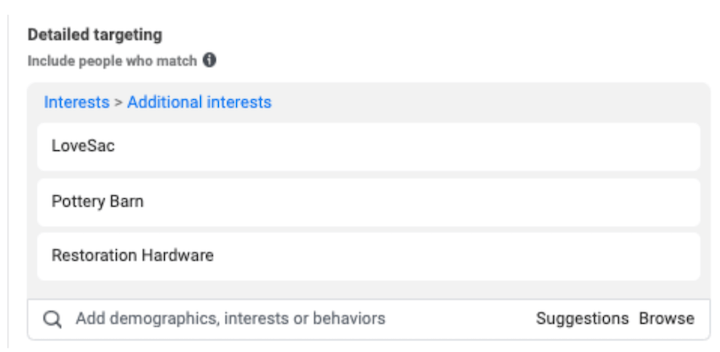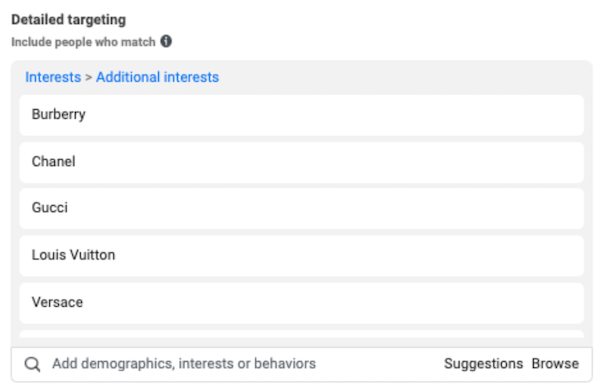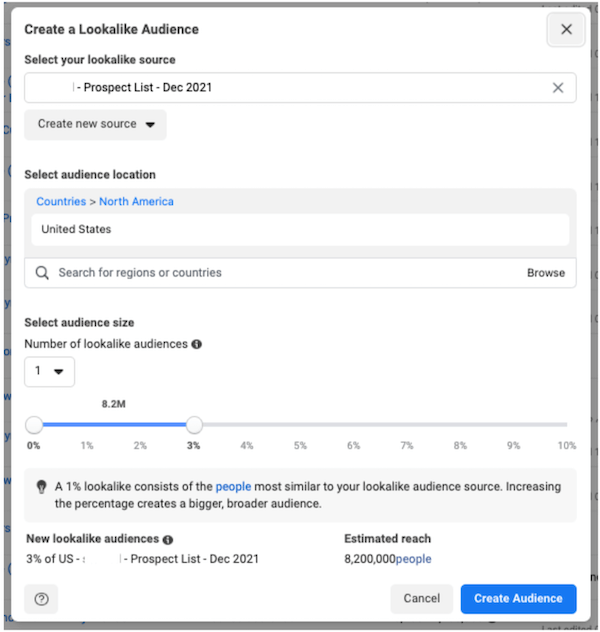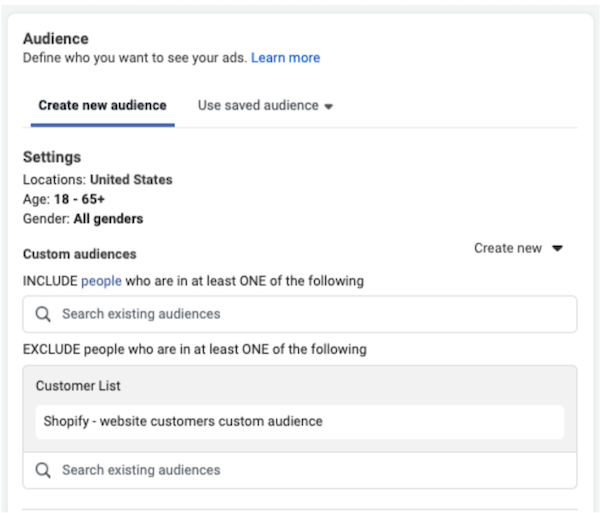6 Ways to Scale Facebook Ads (The Right Way)
Facebook advertising has been a staple of nearly every major brand over the last 5+ years. There’s no doubt that the platform provides value and can help you introduce your company to new buyers.
If anything, a more common challenge I hear is how to find MORE scale within the Facebook Ads environment. Companies are seeing good returns and want to make the most of this channel while the getting is still good.
With that point of view in mind, here are some ways you can try to find scale within your Facebook Ads accounts.
6 smart ways to scale Facebook ads
There are two main levers to pull for scaling Facebook ads: audience and budget. One note on audiences: Through years of advertising on Facebook, I’ve found that pretty much everyone has a different approach to finding their target groups. Since it’s obviously impossible for me to know what strategy you’re using, I’m going to simply outline a few of the best ones I’ve seen. But first, let’s start with budget.
1. Increase your budget
This one might be a complete no-brainer, but to get more out of your Facebook Ads account, the easiest first step is to simply give it more budget.
Despite how simple that advice is, scaling budget in Facebook isn’t as simple as it is in other platforms like Google or Microsoft Ads.
Each time you change your budget in Facebook, you alter one of the data points that’s feeding its algorithm and determining who sees your ads when. So each time you make a budget change, you risk resetting the Learning Phase, or Facebook’s name for, “we’re trying to figure out what to do now, so give us a minute”.
No matter if you’re using daily or lifetime budgets, there is a general guideline for scaling with this method:

All budget changes should be 20% or less of the original budget. If you want to adjust your budget by a higher percentage, you should do it in multiple phases with no individual phase exceeding the 20% rule.
Here’s a video you can watch to get a walk through of this strategy with a bit more detail, but for the sake of this post, just know that increasing budget is an easily achievable tactic to scale on Facebook, but you need to do it in increments of 20%.
2. Target not-as-spot-on interests
If you’ve scaled your budgets into the audiences you have and are still wanting to find more scale, it could be worth extending your reach into newer segments of users. Here are
Fortunately and unfortunately, Facebook’s targeting isn’t going to be perfect, which means that you might not find the exact products that you’re trying to sell, but you might find something that’s similar. I would assume that you’re already targeting the perfect fit products for you in your original campaigns.
For this approach, you’re trying to find the “not-as-spot-on” interests that are related to the products/services you’re selling. Maybe they’re a substitute or complementary product or maybe they’re just in the same field as what you’re offering. Take advantage of the fuzzy associations Facebook can make with it’s targeting options and use these closely related targets to find more scale.
3. Go after competitor brands
Everyone likes to take a little bit of their competitor’s business. After all, we’re competing, right? There are strategies you can use to find your competitor targets on the Facebook platform as well.
First, you can see if your competitor’s brand name shows up as a targeting option. This likely will only be eligible for large brands, but you don’t have to be a large brand to use them.
If you provide a product or service on a local level and there are brands available to target that provide the same services on a national level, you use their interest to help attract new customers to your local service.
Here’s an example. I have a luxury furniture company as a client that sells high-end, very nice custom pieces. Unfortunately, the income targeting options went away from Facebook a long time ago. So we extended the list into other high-end brands like Arhaus, Restoration Hardware, Pottery Barn, and others that had comparable price points as well as larger footprints.

As a bonus for your ad creative, you can take a few notes from your competitor’s creative playbook by looking at their live Facebook ads in the Facebook Ad Library and finding aspects of them you like and can use in your own strategies.
4. Tap into affinity brand audiences
In the same vein as competitor brands, you can also use affinity brands to help extend your reach from your current lists. Think of other brands that complement yours or that your customer base would also purchase from. Using those as a way to find new customers has always worked well for me.
Using the same furniture company as an example, we know there are a number of brands people likely will purchase from that are also on the higher, more expensive end, but aren’t in the furniture or home decor space. We utilized the targeting options above to find new customers based on their affinity for other brands.

As I’m sure you can tell with these examples, none of these are perfect. Just because Facebook thinks you’re interested in Burberry and Versace doesn’t mean that you’ll also be guaranteed to buy a $8,000 couch. But if you’re looking for scale, this is a great way to lean into some form of machine learning that could also be the right mix of people.
5. Expand lookalike models
Lookalike models are one of my favorite targeting options on Facebook. They’ve always performed well for me as long as the seed audience I used had a strong pattern to it. If you’re not familiar with Lookalike audiences, they’re essentially an algorithmically-generated audience of new users to target on Facebook modeled off of a list of users you provide.
The biggest problem I see with advertisers is that they don’t take full advantage of these lists in one of two ways:
They only use one model
The easiest place to start with Lookalike audiences is by creating a new list from your current customer base. This is the model most folks run with because, as the logic would dictate, we all want more customers. So creating a Lookalike off of our current customers is the best place to start with that.
But if you’re seeing strong performance, you can easily expand into other models of high-value users to find new groups. Lookalike models on Facebook are a function of population and always have the same amount of users in them. So by creating multiple seed audiences, you can extend the reach of your Facebook campaigns.
Here are a few ideas for additional seed audiences for Facebook Lookalike audiences:
- Users who added products to their cart
- Newsletter subscribers
- Lead generation form submitters
- High-value customers only
As long as the list of users you’re making has a distinct pattern in it, you can make a Lookalike audience from it.

They only use the 1% expansion
I mentioned above that Lookalike audiences are functions of the population in a given area. The most specific model of users is 1%, meaning those most highly correlated with your seed list’s persona.
But if you’re seeing strong performance from that list, why not extend the model to 2% or even 3%?
Test adding in incremental percentages to your lists and see how they perform. In my experience, each account will have its own breaking point, whether it be 2% or 8%, but you’ll never know until you test the expanded increments.
6. Test broad targeting
If you’ve scaled budgets and tested all potential target audiences on Facebook and you still are looking for more scale, there’s one last option that could be valuable, but it comes with a big caveat. So first, the strategy:
With broad targeting, you use a conversion-focused campaign and identify the conversion action you want more of. Then, you leave the rest up to Facebook.
Yeah, for real.

You don’t add any other targeting options to the campaign, other than some exclusions to ensure you don’t target your existing customers or those in your retargeting audiences, and let Facebook go to town.
Now for the caveat:
This strategy is best employed by accounts with high volumes of the desired conversion action. This isn’t for people just barely making it past the conversion minimums for the get out of the learning phase.
For broad targeting to work best, you should have a minimum of 100 desired conversion actions in your account per week to make it work best. If you don’t, this could still be worth a test, but I encourage you to start conservatively with budget and scale up only if you see success.
Try these ways to scale your Facebook ads
Although I only covered two main levers for scaling Facebook campaigns (budget and audience) there are a number of individual strategies that can help you get there and in a way that works best for the Facebook algorithm. If you’ve executed all of these tactics and are still looking for more scale, it might be time to step out of your current frame of mind and start to investigate other platforms such as Snapchat, TikTok, and others to reach new users.




![The Best Time to Post on Instagram in 2023 [For Every Scenario]](https://staging.wordstream.com/wp-content/uploads/2023/08/best-time-to-post-on-instagram-feature.jpg)



Comments
Please read our Comment Policy before commenting.